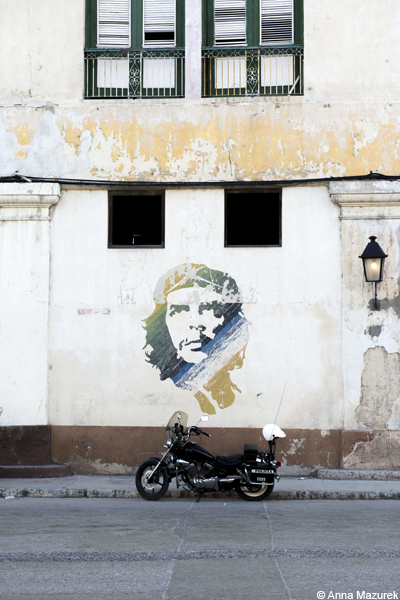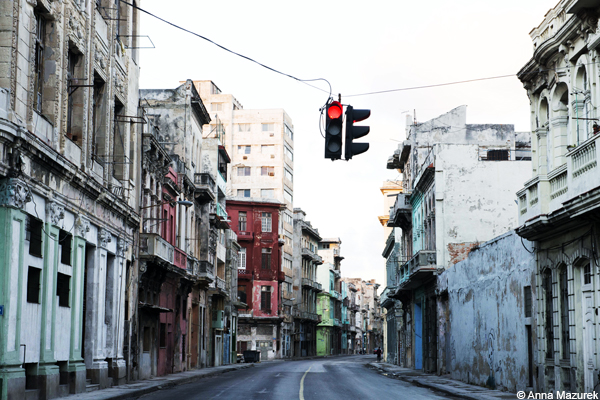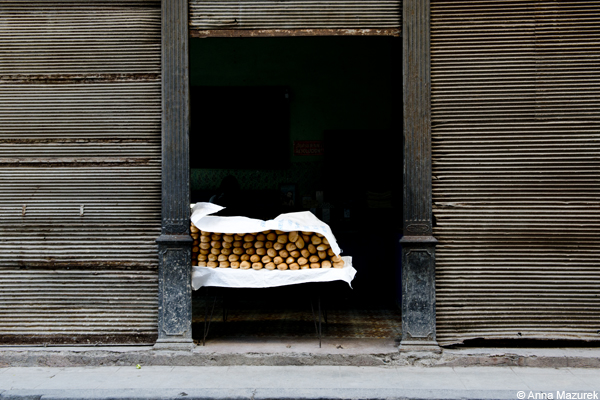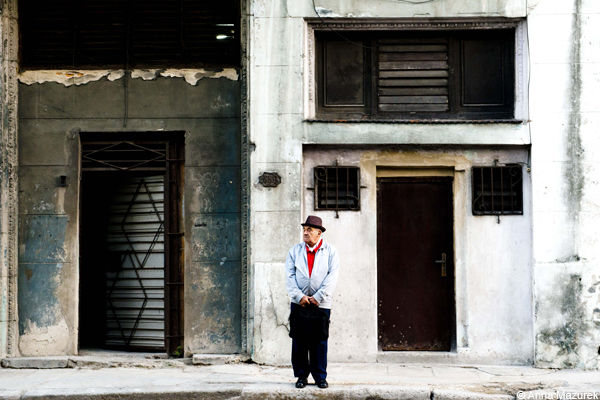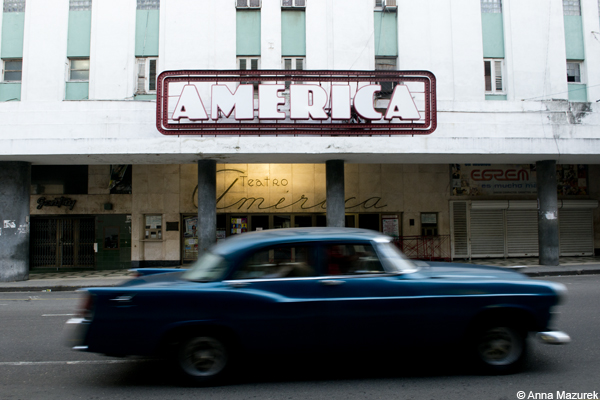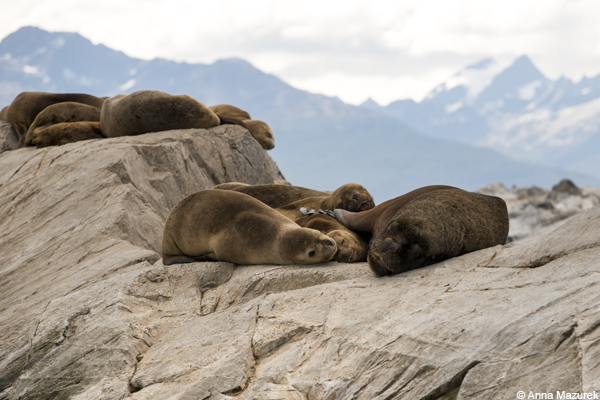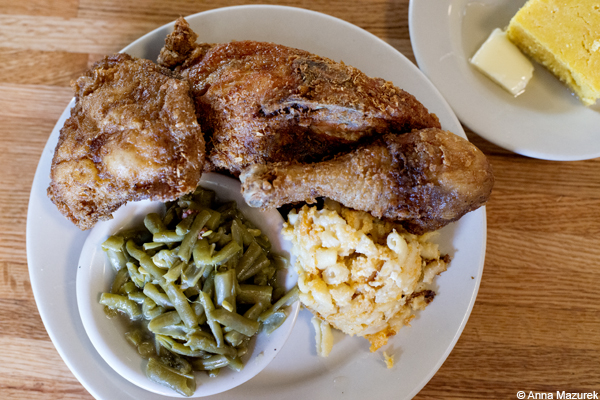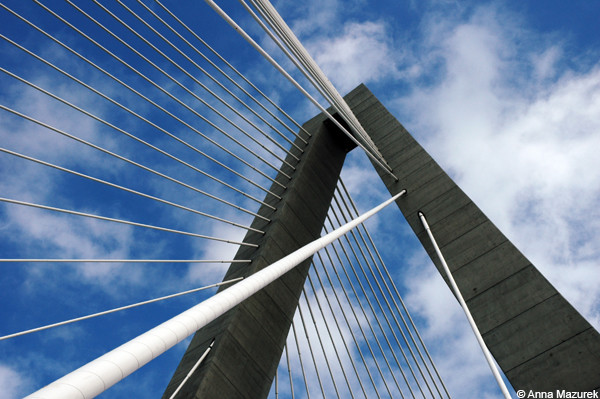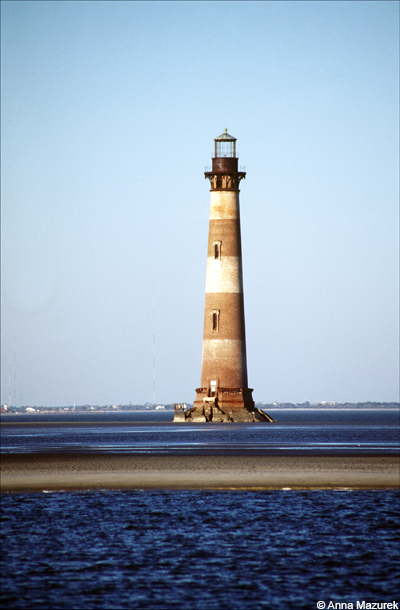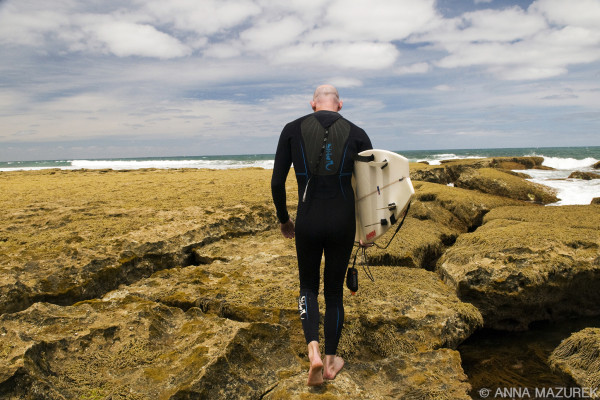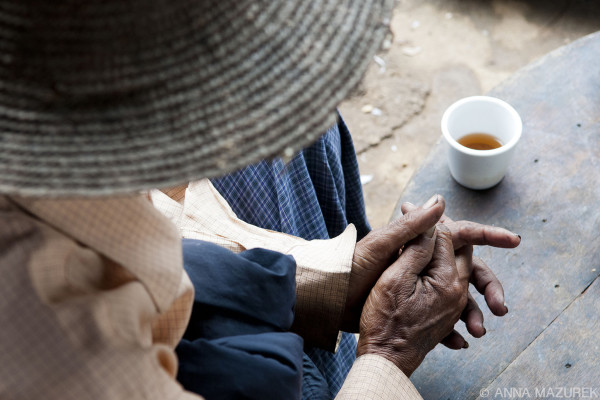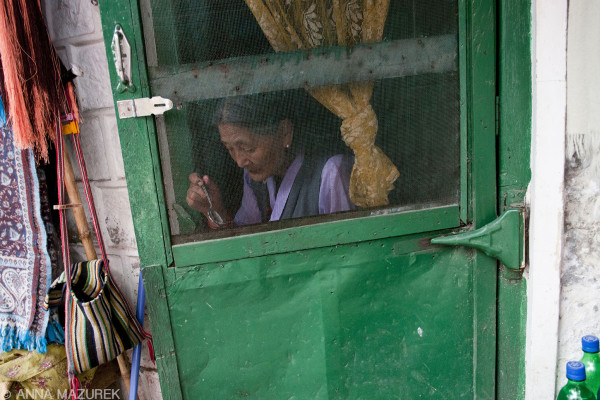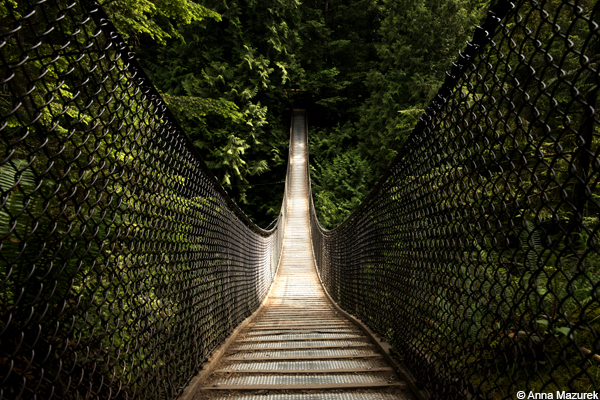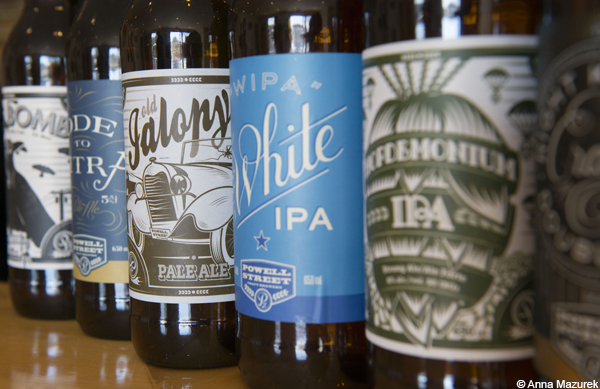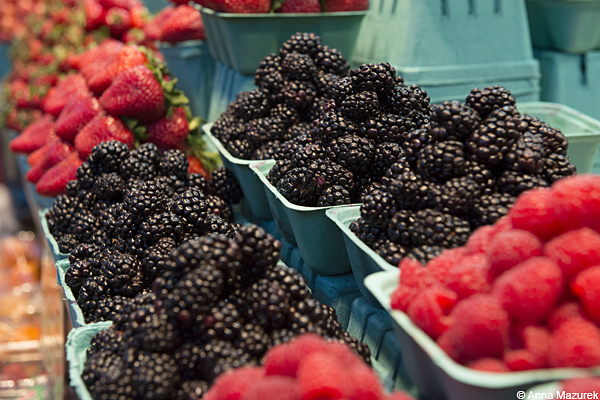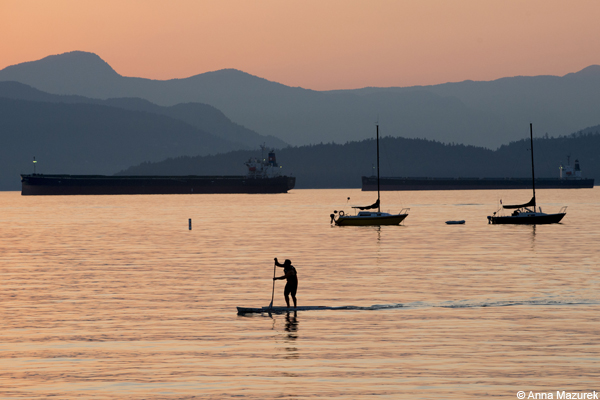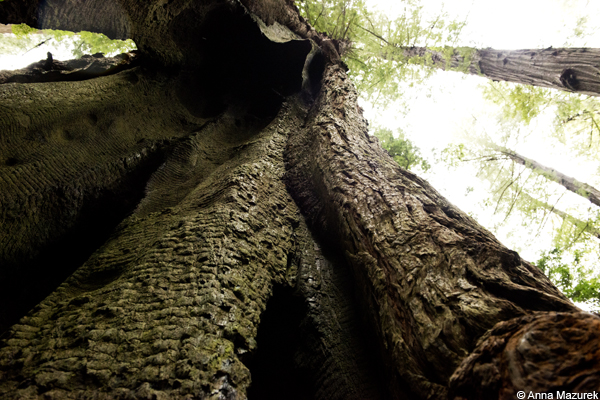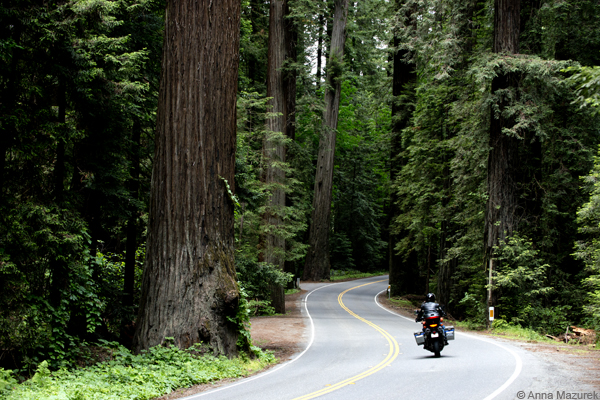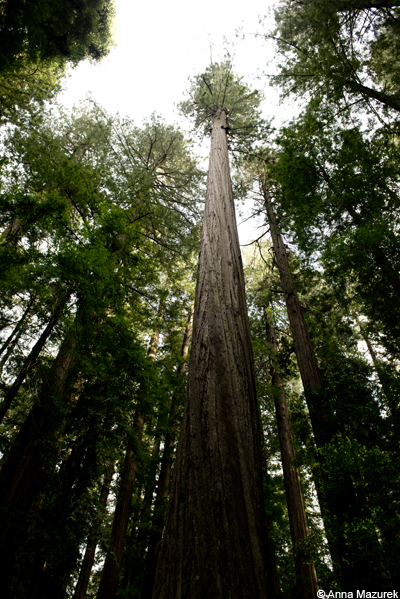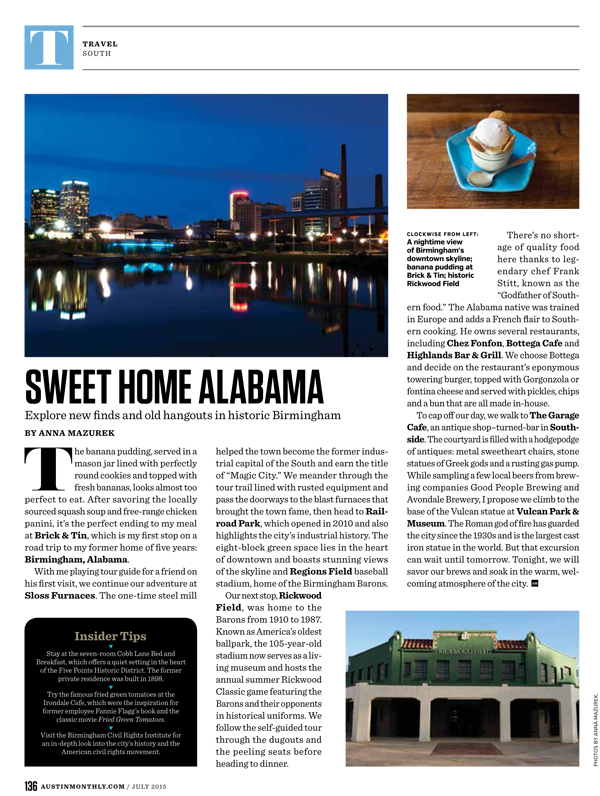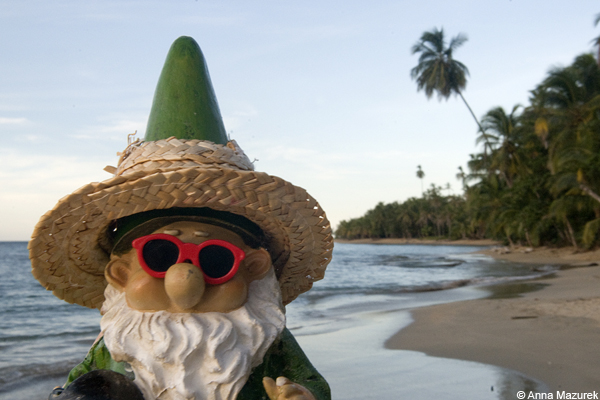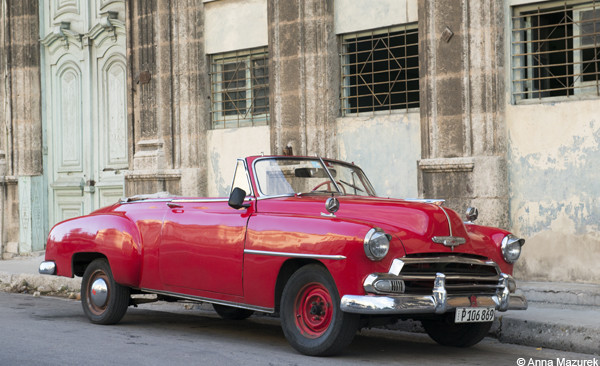
Havana Daydreaming: A Photo Guide to Cuba’s Capital
A visit to Cuba is like stepping out of a time machine to the 1950s – streets filled with crumbling colonial buildings, vintage cars and cigar smoke. Every night salsa music leaks into alleys filled with card table domino games.
It is nearly impossible not to fall in love with Havana. It quickly became one of my favorite cities. I spent the majority of my time roaming the streets with my camera or going for long runs along the Malecón, the city’s iconic eight-kilometer long seawall.
I stumbled upon a mural of Che Guvera, the infamous revolutionary, on a run near the ferry terminal. Che is everywhere I go – his face is on t-shirts in Burma, stickers on the back of tuk- tuks in Laos, graffiti in Panama and jeeps in India.
My quest to go to Cuba started on the opposite side of the world in the most unlikely place – Burma. The Asian country was untouched by McDonalds, Starbucks and many influences of the Western world. ATMs weren’t an option. As I stared out the taxi window at the streets of the Yangon, I thought, “This must be what Cuba is like.” I am always fascinated by remote places and life on the fringes of society. I find beauty in the crumbling buildings and weathered streets. It is my favorite thing to photograph along with the street vendors.
Despite the poverty and challenges of life in Cuba, the locals possess an unrelenting warmth and resilience. It is the same resilience I saw in Burma and the remote corners of the Himalayas. They are survivors. As rumors of change sweep through the streets of Havana, my hope is that Cuba can retain its charm during and the quality of life improves dramatically for the locals.
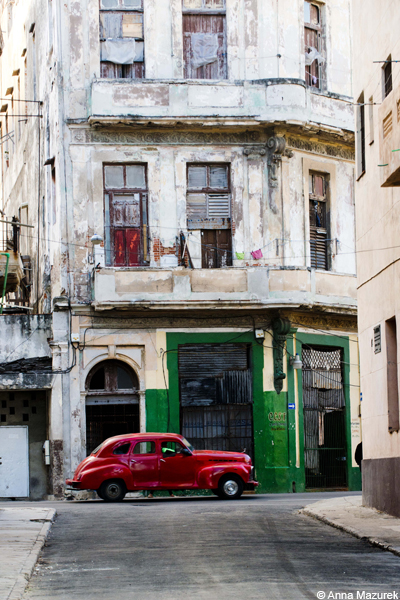
Tips for Traveling in Havana
Where to Stay:
- For the most authentic experience, stay at one of the many casas particulares, bed and breakfasts run by locals out of their homes. The best in Havana is Casa Deysi. She was recommended to me by a Brazilian guy I met traveling. Deysi was amazing and made my trip!
- Prices for casas particulares usually range between $20-30 USD per night for a room. They all have a small white rectangle sign outside with a blue symbol that resembles an upside down anchor.
Where to eat and drink:
- Starbien Restaurante might just be the best meal in Havana. Other great dinner spots include Ivan Justo and La Terraza. All three require reservations.
- Francesca’s Bakery across from Parque Central is a great budget-friendly breakfast spot with amazing ham and cheese croissants.
- The Cuban sandwich at Hotel Nacional on the Malecón is also a must.
- Grab a table at one of Hemingway’s favorite spots – the Floridita. Be sure to order a daiquiri, stay for a few songs by the talented house band and pose for an obligatory photo with Hemingway’s statue.
Money:
- Cuba has a dual currency system – Cuban convertible peso (CUC) and Cuban peso (CUP.) The standard currency is the CUC, which is used for most accommodation, transport and state-owned restaurants. The exchange rate is usually a consistent $1 USD = $1 CUC. Smaller privately-owned restaurants and produce markets will only accept CUP.
- Euros currently get the best exchange rate. ATMS are still limited and very few cards currently work. Currency exchange is available at airport and banks in the city.
- A taxi to central Havana from the airport is a set rate at $25 CUC.
For further information on traveling to Cuba, these articles from the The New York Times and The Guardian are a great resource.
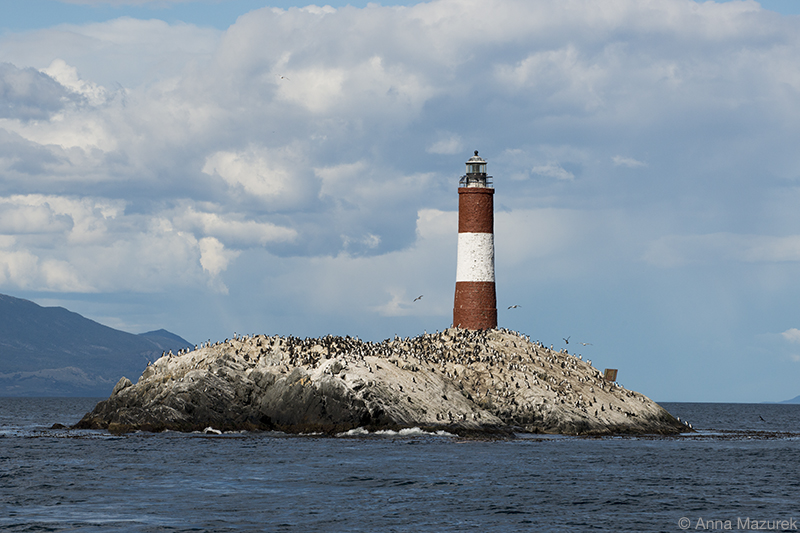
Ten Ways to Maximize Your Frequent Flyer Miles

I traded in a few Delta FF miles for a one-way flight to Ushuaia, Argentina – the gateway to Antartica in January.
I recently wrapped up a seven-month bucket list trip in Central and South America. During the entire trip, I flew about fifteen times but only paid for four flights. The rest were booked with frequent flyer miles.
Whether you’re planning a trip to the Himalayas or Kauai, follow these ten simple ways to maximize your mileage.
1. Sign Up
The first step is to sign up for a frequent flyer mile account with the airline you fly the most often in each of the three major airline alliances: Star Alliance, oneworld and SkyTeam. Otherwise, choose the most logical national/regional airline near your home in each alliance. (For most Americans, the best options are usually Delta, American Airlines, and United.) For family travel, make sure everyone has their own account including children.
2. Airline Alliances
Airline alliances provide more options to both earn and redeem miles. When I lived in Australia for a year, I usually flew Qantas but always earned miles on American Airlines. Even if you book the cheapest flight, the odds are good your airline is part of an alliance. Simply add the frequent flyer number of the corresponding national/regional airline from your country to every reservation.
3. Redeem Wisely
There is an art to redeeming miles. International flights are almost always the best deal. Plus, airline alliances open up a wider range of route options. One-way domestic or international flights are great options for planning multi-city trips.
For U.S. domestic routes, fares under $300 are usually not a great value for award travel. (A mileage award for a domestic flight can be almost as much as a more expensive international flight so choose carefully!) For domestic routes in foreign countries, reward mileage levels can be as low as 6,000 miles one-way!
Book award travel online to avoid fees. If that’s not possible, most airlines will automatically waive the agent fee for booking by phone. If they don’t, be sure ask for a fee wavier.
4. Book Early & Avoid Peak Season
The early bird gets the best deal. During holiday and peak seasons, moving your travel dates back a few weeks or even days can save you up to 75%! Award travel for the holidays should be booked months in advance to snatch the best deals. If you wait, you still might get award flights, but you’ll have a higher chance of ending up with multiple layovers.
5. Double Dip
Many hotel and other loyalty programs allow you to earn airline miles in conjunction with their points. Hilton HHonors allows you to earn one airline mile per dollar spent. You can even exchange their hotel points for miles! Most airlines also have deals with rental car companies for discounts and bonus miles.
6. Work Travel
There’s nothing better than getting paid to travel. Many people forget to collect miles on work travel for airlines, hotels and rental cars. Regardless of who pays for the flight, the person who flies gets the miles. But, make sure all hotel and car reservations are in your name to ensure you get mileage credit!
7. Rewards Credit Cards
Almost every reward credit card includes a signup bonus offer – spend a certain amount (usually $1,000) in the first 90 days and receive up to a 40,000-mile bonus. That’s more than enough for a round-trip flight from the U.S. to Central/South America or a one-way flight to Europe!
Airline-based cards often give you double points for flight purchases and either a discount or percentage back for redeemed miles. You also get free checked bags for you and companions; plus, priority boarding! (Keep in mind award cards usually have an annual fee that is waived the first year.)
Some non-airline cards allow you to redeem miles for the partial cost of the flight. The best part is that you can still earn miles on those flights!
8. Dining Programs
Earn miles while you eat! Most major airlines have dining programs that allow you to register all of your bank cards. You earn points when you dine at a participating restaurant with any of the cards linked to your account!
9. Mileage Shopping Malls
Online shoppers should check out airline mileage shopping malls. Many offer extra points when purchasing online through their mall, which links to websites of popular retailers like Apple, Target and Home Depot. Simply click on your airline or credit card’s link to the retailer’s website and all purchases made will earn bonus miles.
Bonus mileage varies per retailer and ranges dramatically with regular promotions. Maximize your points by using your rewards credit card for purchases. There’s no better place to do your holiday shopping!
10. Social Media
Many airlines offer free miles on social media for watching videos or participating in online promotions. Plus, it’s also a great way to keep up to date about their current sales, new routes and mileage promotions.
(This is a post I originally wrote for AFAR.com.)
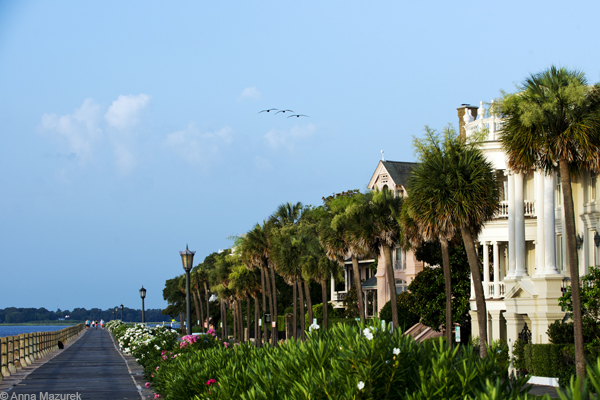
ROAD TRIP: Top 5 Things to Do in Charleston

Take a stroll down the Battery. The iconic defensive seawall turned promenade is lined with antebellum homes.
I always find an excuse for a road trip to Charleston when I visit my family in South Carolina. There are few places I love more than this seaside city that has a history as savory as the soul food.
Here are five reasons to fall in love with Charleston:
Historic Homes
Bridges and steeples fill the Charleston skyline. The colonial streets are lined with ghost-filled mansions wrapped in layers of porches. If those mansions could talk, they would tell tales of pirates, earthquakes and great battles.
Many of those historic homes are open to the public for tours including the 1772 Heyward-Washington House. It is named after owner Thomas Heyward, Jr., who signed the Declaration of Independence, and George Washington who briefly rented the home in 1791. The house is famous for its collection of Charleston-made furniture including the stunning Holmes Bookcase, which is considered to be the finest example of American-made colonial furniture. Other notable homes to visit include the Nathaniel Russell House Museum and Joseph Manigault House.
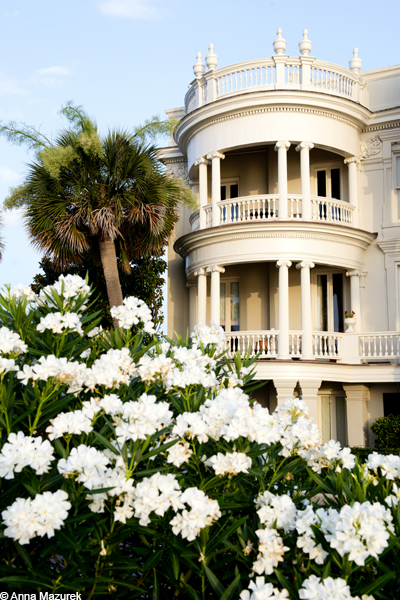
My favorite house in Charleston is the 1856 Porcher-Simonds house which is known as the Compromise House. It is not open to the public.
Savory Soul Food
There is a line outside Jestine’s Kitchen for a reason – the fried chicken is legendary. The meat and three restaurant serves up Southern favorites like mac and cheese, banana pudding and collards. Treat yourself to the pumpkin ravioli at Sermet’s Downtown – a delectable Mediterranean bistro, conveniently located in the King Street shopping district. Don’t forget to make dinner reservations at the white-table cloth Peninsula Grill, located across from the City Market, for a juicy steak or oysters. Be sure to save a little room for their famous coconut cake.
Cooper River Bridge
The icon of the Charleston skyline is the Cooper River Bridge, North America’s longest cable-stayed bridge. It opened in July 2005 to replace the aging bridge. It’s a must for any trip to the city. Be sure to walk the bridge’s 2.7-mile pedestrian and bike trail for great views of the harbor.
Rainbow Row
Stroll over to the most photographed place in Charleston—Rainbow Row, thirteen pastel-colored houses along East Bay Street. Continue walking to the Battery, the iconic defensive seawall turned promenade lined with stately antebellum mansions. The Battery offers a view of Fort Sumter, where the first shots of the Civil War were fired in 1861, and the USS Yorktown, a WWII battleship turned museum located at Patriots Point Naval and Maritime Museum.
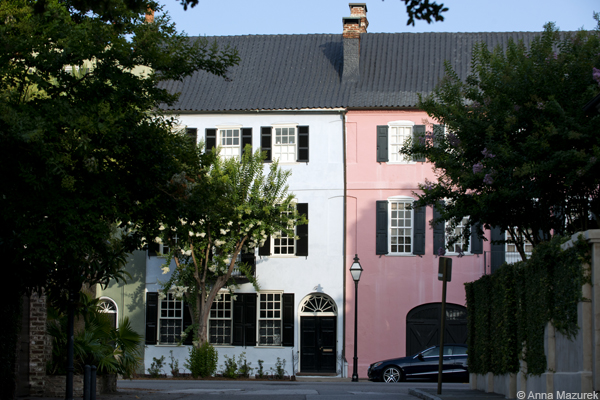
The paint color of historic homes like Rainbow Row must be approved by the Board of Architectural Review.
Morris Island Lighthouse
There’s no shortage of beaches in Charleston. My favorite is laid-back Folly Beach. Walk to the end of the beach for a scenic view of the historic 1876 Morris Island Lighthouse, which now stands several hundred yards offshore due to erosion. To reach the lighthouse, take Center Street until it ends then turn left on the E. Ashley Avenue until it reaches a dead end. Park on the side of the road and walk down the path to the beach.
Other beach options include the swanky Isle of Palms or Sullivan’s Island, which is filled with colorful houses with quirky names.
This guide is an excerpt from the story I wrote and photographed for Birmingham Magazine.
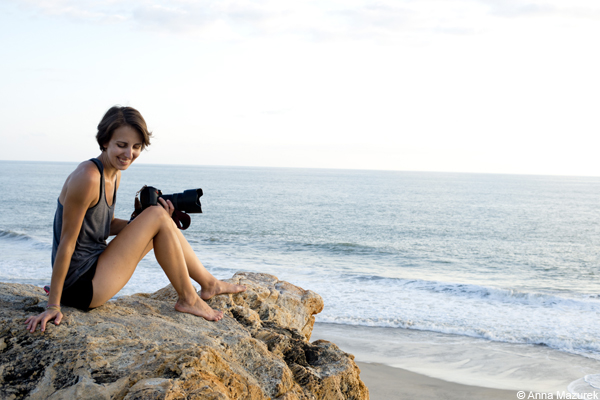
How to Prepare for Long-term Travel
Last October, I began the greatest adventure of my life: a solo bucket list trip through Central and South America. I had no set plan or time frame except to check three major places off my bucket list: Patagonia, the salt flats in Bolivia and Cuba.
Since 2008, I have been on the road non-stop working mostly as a freelance photographer. I’ve visited 43 countries and lived in five. Long-term travel seemed overwhelming until I learned how to prepare properly.
Here are a few tips about how to get ready for your own long-term trip:
Do The Research
Cost of Travel
The biggest myth about traveling is that it’s expensive. Asia, aside from Japan and Singapore, is traditionally the cheapest part of the world. Australia isn’t cheap, but Europe is more affordable since the Euro has dropped. Flip through guidebooks on your destination to get an idea about the cost of the three biggest travel expenses: transport, accommodation and food. Gathering a little information will guide you through setting the appropriate trip budget and savings goal.
Health & Safety
Visit a travel doctor about vaccination requirements and stock up on medication for traveler’s diarrhea. Be sure to pack probiotics that don’t require refrigeration.
Read up on the history of your destination. Follow any recent or potential political/military conflicts closely. Avoid traveling during elections as most businesses close and riots are possible. Check the U.S. State Department’s website for travel warnings and sign up for their Safe Traveler Enrollment Program for email updates. Talk with other travelers and review guidebooks for specific travel concerns (solo women travelers, taxi hijackings, etc.).
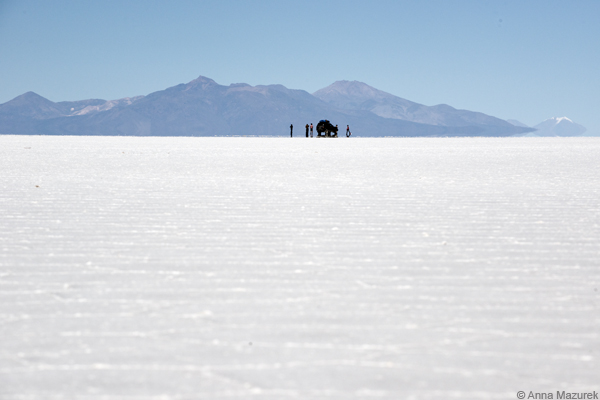
A Bolivian visa for Americans can vary in price. I paid $60 cash at the border with Chile for a 30-day visa. A five-year visa can set you back $135. Always take cash.
Visas
Visa costs and requirements are listed on the U.S. Department of State’s website. Many visas are available on arrival while others are required in advance. Several places in South America, including Argentina and Bolivia, charge Americans a reciprocity fee to enter.
High/Low Seasons
Be aware that prices can triple during high seasons and holidays. Rates drop in low season, but monsoon rain, sporadic transport and business closures can cause trouble. Shoulder seasons are often best to avoid crowds and high prices.
Plan Ahead
Bucket list activities will likely be a large portion of your travel budget. For example, Inca Trail permits sell out six months or more in advance. The Peruvian government only allows a limited amount of non-transferable permits. Plan accordingly with both your money and time!
Working Abroad
There are endless options to work abroad, but some require a little preparation. Dave’s ESL café is a great resource for teaching English: Eslcafe.com. Check out Wwoof.net and Workaway.info for work exchange opportunities for free room and board. Working Holiday Visas are options in Australia and New Zealand for Americans under 30.
Tell Everyone
The moment you start to talk about your trip, it transforms from a daydream into reality. Once you’ve set the departure date and spread the news, it also boosts your courage levels. Plus, it’s a great way to get your friends involved and make plans to meet up for a portion of your trip!
Find the Time
I quit several jobs over the past eight years to both travel and work abroad. During my adventures, I met people with variety of careers – doctors, lawyers, teachers and bartenders – who did the same. Always be honest about why you are leaving. There’s a good chance your boss will be jealous of your trip!
If you plan to change jobs, take advantage of any large gaps of time to travel. Post-graduation trips are also common. Consider freelancing from overseas. I still continue the majority of my freelance work abroad.
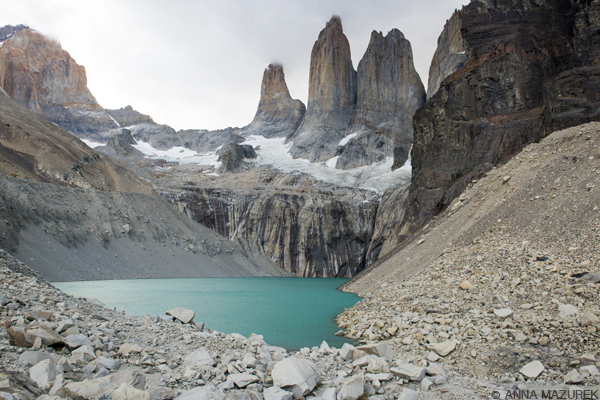
Torres del Paine in Chile was one of the must-see places on my list. I planned ahead to make sure I was there during the best season for hiking, which is December to February.
Prepare
Travel Banking
The easiest way to save money while traveling is to avoid ATM fees and international transaction fees. I have a Charles Schwab Investor Checking Account, which does not charge ATM fees or international transaction fees. ATM fees charged by other banks are refunded monthly. Capital One does not charge international transaction fees on any of their credit cards. Many rewards cards are starting to do the same.
Insurance
Most U.S. health insurance policies offer limited coverage abroad. Invest in a good travel medical insurance plan that covers emergency evacuations, adventure sports, short visits to your home country and end-of-trip home coverage. If you have a serious preexisting condition, research your options thoroughly. Some policies will cover an “unexpected occurrence” of these conditions.
Consider a policy or additional insurance that also includes trip delays, lost luggage and electronics. I insure my camera gear through State Farm’s Personal Articles policy. Be aware that most policies will not cover smart phones.
Get Healthy
Hit the gym and cut the caffeine. Traveling can be physically exhausting. Carrying a 30-plus pound backpack around airports, city streets and hiking trails for months will take a toll on your body. Six-months before my recent trip, I focused mostly on strengthening my upper body since my lower body was fairly strong from being an avid runner.
Before my first big trip in 2008, my caffeine addiction was causing havoc on my health with horrible withdrawal headaches and pain from dehydrated muscles. I didn’t want caffeine to control my mood while traveling so I weaned myself off six-months prior.
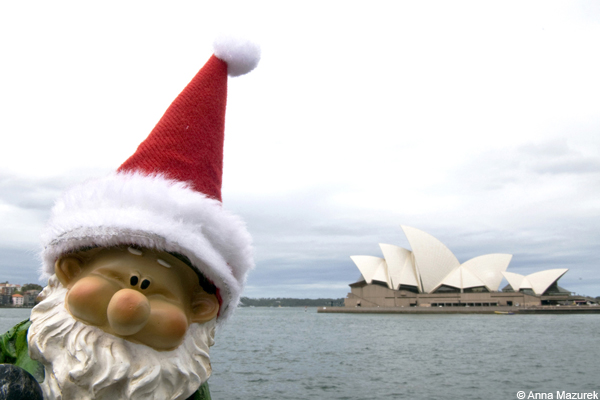
Meet Alfred, my globetrotting gnome! I take photos of Alfred around the world and make Christmas cards and postcards for my friends as a fun way to stay in touch.
Keep in Touch
Distance doesn’t have to affect your relationships or love for sports. My closest friends live on three different continents. I talk to them regularly through various apps like Skype and WhatsApp. I share my adventures with friends and family through regular updates on Instagram and posts on this blog. When I’m lucky enough to have fast internet, I stream football and baseball games.
Send postcards. Everyone loves real mail. Set reminders for birthdays. If you can’t find stamps, use the Postagram app to send a postcard with your travel photos! I always send photos of my favorite gnome, Alfred, who is pictured above.
Minimize
Sell Everything
Think like a Buddhist and rid yourself of attachment to your possessions. It’s better to invest in experiences than things. Ebay is always great for selling collectable items like my childhood Hard Rock Café shot glass collection that sat in boxes at my parent’s house for years. It sold instantly and covered the cost of the first week of my trip! Consignment shops are great outlets to sell clothes, housewares and art. Donate everything else to charities.
Set a deadline three months before your trip. After this deadline, you can’t buy anything that isn’t for your trip.
Eliminate Bills
You should have NO bills while you travel. That’s right – none! Cut off your Pandora, Netflix, Amazon Prime, etc. Sell, rent or have a friend list your house/apartment on Airbnb.com for a small commission. Sell your car or rent it to Relayrides.com or Flightcar.com. Several cell phone carriers will allow you to suspend your service without billing or for a small fee. For student loans, save enough money to cover payments for the entire duration of your trip plus an additional two months after you return. For more details, check out my post on Eliminating Bills.
Pack Light
The movie, Fight Club, was right. The things you own, own you. Pack one-weeks worth of clothes and do laundry often. It’s that simple. Trust me, your back will thank you.
Here is a short list of my top five essentials to pack from eight years of wandering the globe:
- Quality Rain Gear
Invest in a quality raincoat with zippered underarm vents for hot conditions. It also serves as a top layer for insulation in cold weather and helps with wind. - Headlamp
The headlamp is the single greatest invention after the burrito. - Stainless Steel Water Bottle and Water Filter
Save the environment and your health by investing in a stainless steel water bottle and chemical-free water filter. I use a Klean Kanteen water bottle and a Sawyer Mini Water Filter. Both are great for your bank account and pack easily. - Dr. Bronner’s Soap
Dr. Bronner’s is organic, biodegradable and smells great. Use it as body wash, dish soap and laundry detergent. - Quick Drying Towel or Sarong
A small quick drying hand-towel will dry your entire body. Sarongs are great multipurpose items; they are a towel, dress, skirt, blanket and mop all in one!
(I have no affiliation with these products. I just love them because they’ve been a big help on my travels!)
Additional Packing Tips:
- Consider the cost of renting camping gear versus the burden of carrying your own gear for the duration of your trip.
- Make sure all electronic chargers are dual-voltage. Don’t forget plug adapters.
- To avoid over packing, don’t wait until the last minute. Start a few days before you leave. Then, go back and eliminate items. Make sure the majority of clothing matches to maximize options.
- Pack for one season. I packed mostly for summer on my trip and spent $20 on a llama sweater with matching gloves and socks when I got to colder weather in Bolivia.
- Don’t forget a good paperback travel book for long bus rides. When your Kindle battery dies, you’ll thank me. I recommend anything by Pico Iyer or Paul Theroux.
- Check out my Packing List Top 10

A Five Step Guide to Travel Photography
My alarm went off at 4:30 a.m. Determination masked my sleepiness. My goal was simple – to photograph the famous Fushimi Inari Shrine in Kyoto, Japan without any people. The early bird gets the photo.
For the past eight years, I have roamed the world with my camera working as a freelance photographer and managing photo trips in Asia. I quickly learned the secret to travel photography is getting up painfully early. The reward is silence, photos with clean backgrounds and a glimpse of the real culture.
Whether you are shooting with an iPhone 6 or a DSLR, these five tips will help polish your photography skills for your next adventure.
1. Strong Composition
The quality of a photograph is directly related to the composition. Focus on filling the frame to only include essential elements and crop out distractions. Create depth, perspective, scale and balance with your camera angle. Use leading lines to guide the eye around the frame. In the photo above, I used the curve of the stairs to grab the viewer’s attention and lead their eye through the image from bottom to top. If the composition isn’t quite right, I wait for something to complete it. In the image below, a surfer walked by completing my image in Bells Beach, Australia.
2. Clean Backgrounds
Let’s be honest – no one looks good with a tree branch sticking out of the side of their head. Power lines, trees, street lamps are notorious for sabotaging the best of photos. The easiest way to improve your photography is to avoid distracting background elements by changing your position or moving your subject. Shooting from a lower angle and using a wide aperture will also help crop out or blur any distractions. Exclude any overly bright colors from the image that draw attention away from the subject.
3. Chase the Light
When you find a location you want to photograph, go back multiple times during the day to document the changing light. Pay close attention to the quality and direction of both natural and artificial light. Haze, mist and fog act as a filter, which can mute colors and reduce contrast. Hold your hand into the light to determine the direction and type of shadows. This allows you to choose your angle and position your subject appropriately. Avoid portraits in harsh mid-day light because it produces dark, unflattering shadows under the eye.
The best time of day for photography is known as the “Magic Hour” – thirty minutes before and after sunrise/sunset when light is softer and more dynamic. The best sunset photos are usually before or after a storm when haze/clouds add a dramatic effect to the sky. The ideal time for a sunset photo is after a late afternoon storm.
4. People & Details
Photographing strangers is easier than you think. Simply start a conversation. People love to talk about themselves. Consider putting away your camera and asking to come back later to take a photograph. In unfamiliar cultures, research local customs and taboos. Learn the basic words for “hello” and “thank you.” If you want to take a photo, point to your camera, smile and give a thumbs up sign. Their reaction will be your answer. Remember if someone says no, they are saying no to the camera and not to you. Do not take it personally.
For portraits, focus on the eyes or interesting features. Avoid fake smiles and anticipate behavior. Include details that reveal insight to the subject. A great example is the photo above from a market in Inle Lake in Burma. I walked by an older man having tea, quickly snapped two frames over his shoulder of his hands and kept walking.
5. Shoot from the Hip
My favorite thing to do when I travel is to wander the streets with my camera capturing candid shots of everyday life – children walking to school, the fruit vendor stacking his mangos and the locals chatting with friends. I still shoot the famous spots, but I was trained as a photojournalist and find daily life to be the most fascinating. Street photography is a booming trend in the photo world. It has become a method of understanding and documenting culture. It is based on instinct and preparation. When you see a moment, you must react quickly to capture it before it disappears. French photographer Henri Cartier-Bresson referred to this as “the decisive moment” when all the elements align perfectly.
Shooting from the hip is great way to change the perspective of a photo. It’s great for capturing quiet moments with a unique angle like the image I took above of the women eating her lunch at a market in McLeod Ganj, India.
I simply keep my camera at my side with the exposure manually set for the ambient light with a central focal point and a shutter speed of around 1/250. With an iPhone, it’s very simple. I open my camera app, hold my iPhone horizontally at hip level and use my thumb to press the volume up button, which acts as a shutter release on all iPhones. I do pause for a second when I take an image to make sure the camera has time to focus to prevent motion blur.
Above all, the most important rule of travel photography is to be patient and have fun!
(This is a post I originally wrote for AFAR.com.)
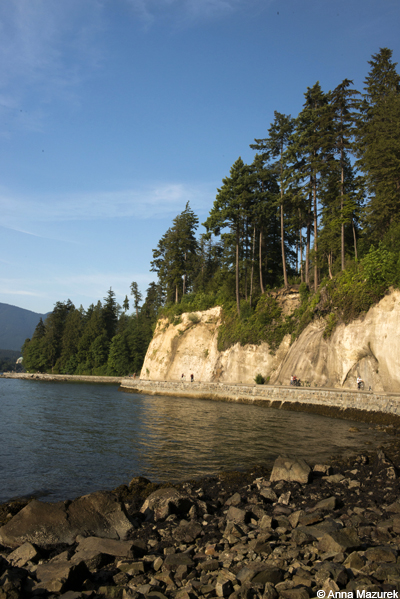
Top 5 Things to do in Vancouver
Vancouver knows the key to my heart—seaside running trails, fresh berries and craft beer. The city is one of my favorite in the world. It’s right up there with Buenos Aires, Charleston and Luang Prabang in Laos.
For more on my Vancouver trip, check out my new travel column in The Denver Post today: https://dpo.st/1UaZtK9
Here’s my Vancouver Top 5:
Stanley Park
If you only visit one place in Vancouver, make it Stanley Park. It’s simply amazing. Even though I’m a runner, I loved biking along the stunning seawall and trails that lined the park. I found a shaded bench near the beach to update my travel journal, people watch and contemplate whether or not I should make Vancouver my new home.
Lynn Canyon Suspension Bridge
Lynn Canyon is a great place to spend a morning. The highlight is a 50-meter high suspension bridge, which connects to the park’s scenic hiking trails. The best part is that it’s FREE. (Don’t confuse it with the Capilano Suspension Bridge, which is $ 37.95 CAD.) Go early to avoid the tour buses that arrive at midday.
Brewery Biking Tour
I am proud to say I survived a 20-mile brewery biking tour unscathed! (The tour was organized by friends of friends.) Rent a bike and design your own tour! It is a great way to explore the city, exercise and support local breweries. Powell Street’s Old Jalopy Pale Ale, Parallel 49’s Gypsy Tears and Red Truck’s Ale were a few of my favorite brews and venues. Strange Fellows is also a nice, new brewery with a sleek tap room.
Tip: Red Truck serves food so it’s a great place to end your trip! The guys at Powell Street can tell you how to get to a great Chinese bakery (New Town Bakery) where you can get the BEST steamed pork buns.
Granville Island Market
My two favorite times of year are summer and berry season. My first stop in Vancouver was the Granville Island Market. The aisles of the covered market were filled with fresh local apples, fish and veggies. And, every kind of berry you can imagine. I ate my weight in berries.
Beaches
There’s no better place to be at sunset than a beach. Luckily, there’s plenty of options including Kitsilano and Jericho . Each one is filled with giant logs to sit on. Get there early to snag your own log seat!
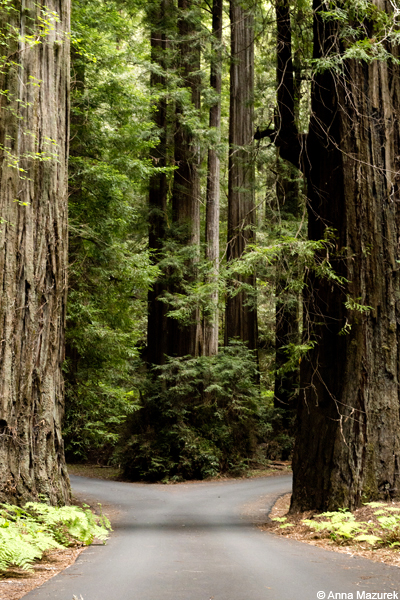
Road Trip: California Redwoods
We all have places that haunt us, the ones we daydream about but can’t quite seem to visit. Humboldt Redwoods State Park was one of those places for me. A friend of my father’s always talks about a road trip he did when he was young. After a bad breakup with his girlfriend, he headed West in his Camaro. He still raves about the Avenue of the Giants and the size of the trees. (He is a lumberman by trade.)
This year I was determined to make the trip happen. Since I normally add a little U.S. trip to the end of every long-term overseas adventure, I traded in a few frequent flyer miles (FF mile guide coming soon!) on a flight from Peru to San Francisco to visit an my old friend, Miles. We rented a car and sang ridiculously loud to the radio the entire drive.
There is nothing more humbling than nature. In 40 years, I will still be talking about the Avenue of the Giants just like my father’s friend.
For more on my trip, check out my new travel column in The Denver Post today: https://dpo.st/1JCWlvD
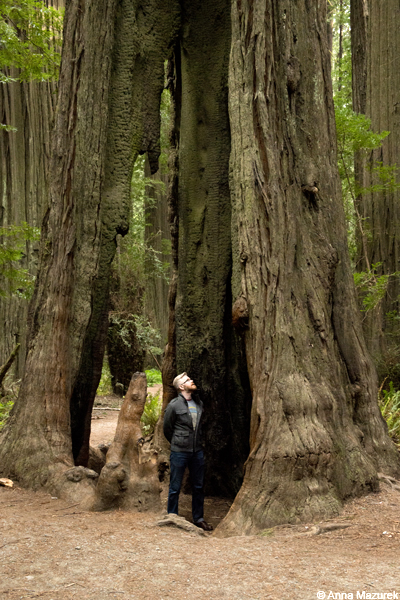
Many redwoods have hollow trunks caused by forest floor fires. Despite the damage, the trees are able to thrive.

My friend Miles poses on the trunk of a fallen tree, which are a vital part of the forest eco-system.
Tips for Visiting Humboldt Redwoods State Park
- The park is open year-round and does not charge an entrance fee.
- Pay on arrival for campsites to avoid the online $8 service fee. Consider booking in advance if arriving late or during peak holiday weekends. Campsites are $35/per car.
- Free maps are available at the visitor center, campgrounds and www.parks.ca.gov.
- The entire park is very photogenic, but the 1.7-mile Drury-Chaney Loop Trail is particularly lush and green. The drive down Mattole Road, which branches off the Avenue of the Giants at the north end of the park, is stunning. Bull Creek Trail North is a beautiful, less populated walk but involves climbing over a few HUGE fallen trees.
Want to learn my secret to FF miles? Sign up for the email list! I’ll post a guide soon!
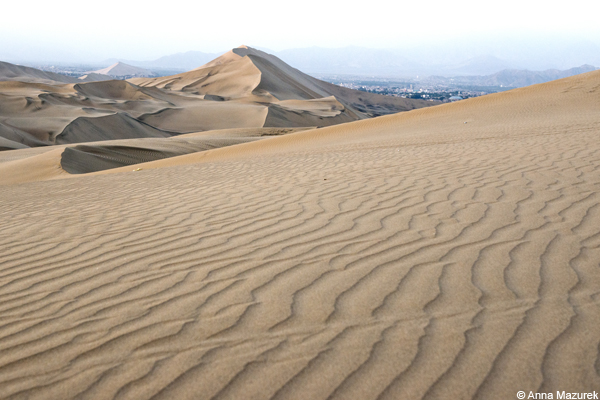
Sandboarding in Peru
The desert oasis of Huacachina is nestled between giant sand dunes in Southwestern Peru. The tiny town is famous for its palm-tree lined lagoon and sandboarding. It’s a must for any trip to Peru!
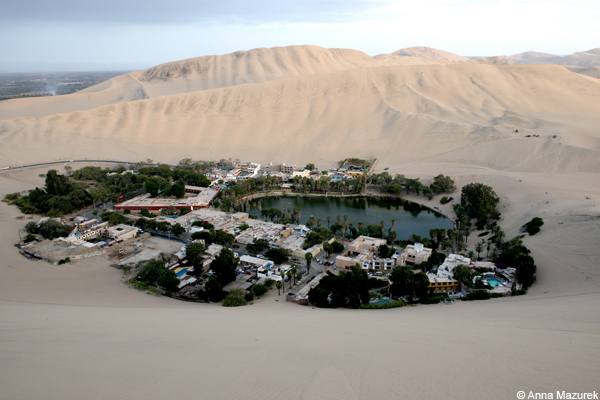
Climb the dunes for a great view of the natural lagoon.
Tips for Sandboarding in Huacachina
Getting to Huacachina. The tiny desert oasis is a 4km taxi ride ($2-3 USD) from the town of Ica, which is on a major bus route. It is easy to get to Lima (4-5 hours) and Nazca (2 hours) from Ica by bus. Fares for Lima are $12-21 and $11-15 USD for Nazca. The VIP class is not worth the extra money and offers no extra comfort for these short trips. It is worth it for longer trips in Peru because nicer buses are used. Snacks (ham/cheese sandwiches) are usually provided.
Use Safe Transport. Bus and taxi hijackings are safety concerns in Peru. Take a safe bus company like Cruz Del Sur. In Lima, they have their own private stations with safe taxis, which charge flat rates. Ask at the station in Ica for safe radio taxis. Hostels in Huacachina can set up a taxi and recommend companies. Traveling during the day is best.
Sandboarding. A dune buggy/sandboarding trip can be booked at any hostel in town. I recommend Banana’s Adventure Hostel. It was very clean. Plus, the food and staff were great. Accommodation, breakfast and a dune buggy/sandboarding trip are $28.76 USD. Book in advance because the hostel fills up quickly. An additional entrance fee of $1.19 USD must be paid to access the dunes except for those entering by foot. There is also an extra fee to rent professional sandboards. Tours are optional – rent a board and go out on your own.
Don’t Miss: Climb the giant dunes behind the town at sunset for an amazing view and a great leg workout. Tours to Ica wineries, Paracas and Islas Ballestras are available from Huacachina.
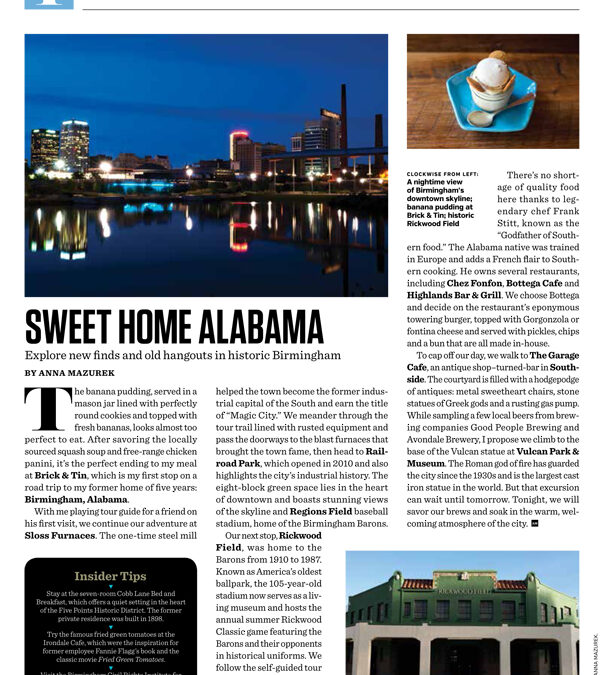
IN PRINT: Austin Monthly
There will be an entire chapter of my autobiography dedicated to Birmingham, Alabama. I wrote and photographed a travel story about my former home of five years for the July issue of Austin Monthly. Please pick up a copy or check it out online: https://bit.ly/1GUxOl9
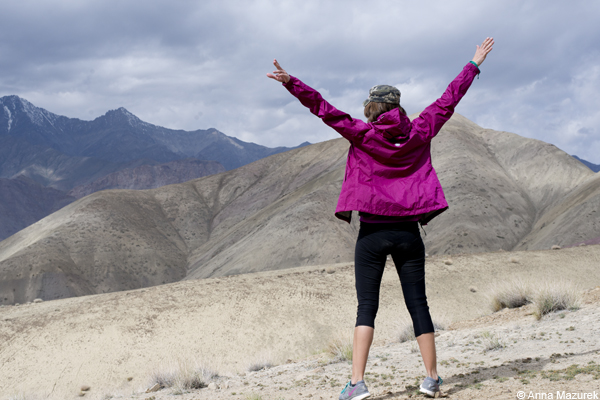
Anna’s Top 10 Packing List
After wandering the globe non-stop for the past seven years, I’ve become a pro at packing the most essential and useful items for my adventures:
1. Quality Rain Gear
Invest in a quality raincoat with zippered underarm vents to allow air flow in hot conditions. It also serves as a top layer for insulation in cold weather and helps with wind. There is a HUGE difference between waterproof and water-resistant. The latter soaks quickly and takes DAYS to dry.
Also, invest in rain covers for your bags. My Osprey day pack cover doubles as a camera cover in wet conditions when I still want to shoot. It’s always handy to have a disposable poncho that fits over you and your day pack, too.
Budget Tip: Check end of season sales at outdoor stores for deals. I got my Marmot jacket above for half-price at REI, when I was shopping for something else!
2. Headlamp
The headlamp is the single greatest invention after the burrito. Invest in one with adjustable brightness, direction and a red light option, which doesn’t attract bugs. It frees up your hands to search through luggage, hike or put up a tent in the dark. When you are camping and have to pee at 3 a.m., it will save you. Phone batteries die. Phones also fall in toilets and don’t have red light options. Trust me, it will change your life.
3. Stainless Steal Water Bottle & Water Filter
Plastic bottles are bad for both the environment and your health. Invest in a good insulated reusable stainless steel water bottle like Klean Kateen. Avoid aluminum and anything that’s not BPA free. Stainless is easy to clean and most importantly—keeps beverages colder longer.
Invest in a quality water filter. I recommend Sawyer’s Mini Filter. It’s tiny, inexpensive and easy to use. I’ve been using it for the past six months in Central and South America. Both items will save you a fortune in airports. Simply filter the bathroom sink water.
4. Dr. Bronner’s Magic Liquid Soap
Dr. Bronner’s is chemical free, biodegradable and smells great. Use it as body wash, dish soap and laundry detergent. Trust me, no other soap will make you or your clothes smell so fresh!
5. Sunglasses
Be kind to your eyes. Pack a pair of sunglasses with both 100% UVA and UVB protection. Don’t be tempted by the $3 Ray bans at the street markets in Asia. They aren’t real and will fry your retinas.
6. Peanut Butter
Grab a jar of natural peanut butter from Trader Joe’s or Whole Foods for $3 before you leave. It’s the best snack for camping, hiking or long bus trips. If you don’t like peanut butter, pack protein bars (not those sugary cereal ones) or hemp protein powder. (Protein bars should have a 2:1 ration of protein to sugar.) Trust me, it’s safer to eat peanut butter than most train station food. Grab fresh bread, bananas and honey for a yummy treat.
7. Combination Locks
Pack a couple sturdy luggage combination locks for your bags and hostel lockers. (Avoid those giant high-school-locker style ones because they are always too big for storage lockers.) Use them on your daypack to deter pickpockets in high theft areas and on public transport. TIP: Set the combination to your birthday so you won’t forget it.
8. Inflatable Neck Pillow
This saves me on every form of transport and takes up no space. There’s nothing worse than getting off a flight with jet-lag AND a stiff neck. It also doubles as a great camping pillow. Add clothing in the middle for extra padding. I’m in love with this Sea to Summit one!
9. Sunscreen
Seriously. Sunscreen can be difficult to find in remote parts of the world and even urban cities like Barcelona. It’s usually outrageously overpriced. In Asia, they add bleach to sunscreen because they value white skin. Save your money and health. Pack a good supply of natural zinc-based sunscreen with you. Aveeno and Neutrogena make natural zinc-based sunscreen for babies that’s easy to find. I packed this Ology zinc sunscreen that you can by at Walgreens or Amazon, for my trip and totally love it!
10. Quick dry towel or Sarong
I carry a small quick dry towel with me. Despite the size, it can dry your whole body, work as a hand towel and clean up spills. Some girls swear by sarongs – they are a towel, dress, skirt, blanket, changing room and mop all in one! I’m a big fan of these Sea to Summit towels.
What’s on the top of your packing list? Share in the comments below!

